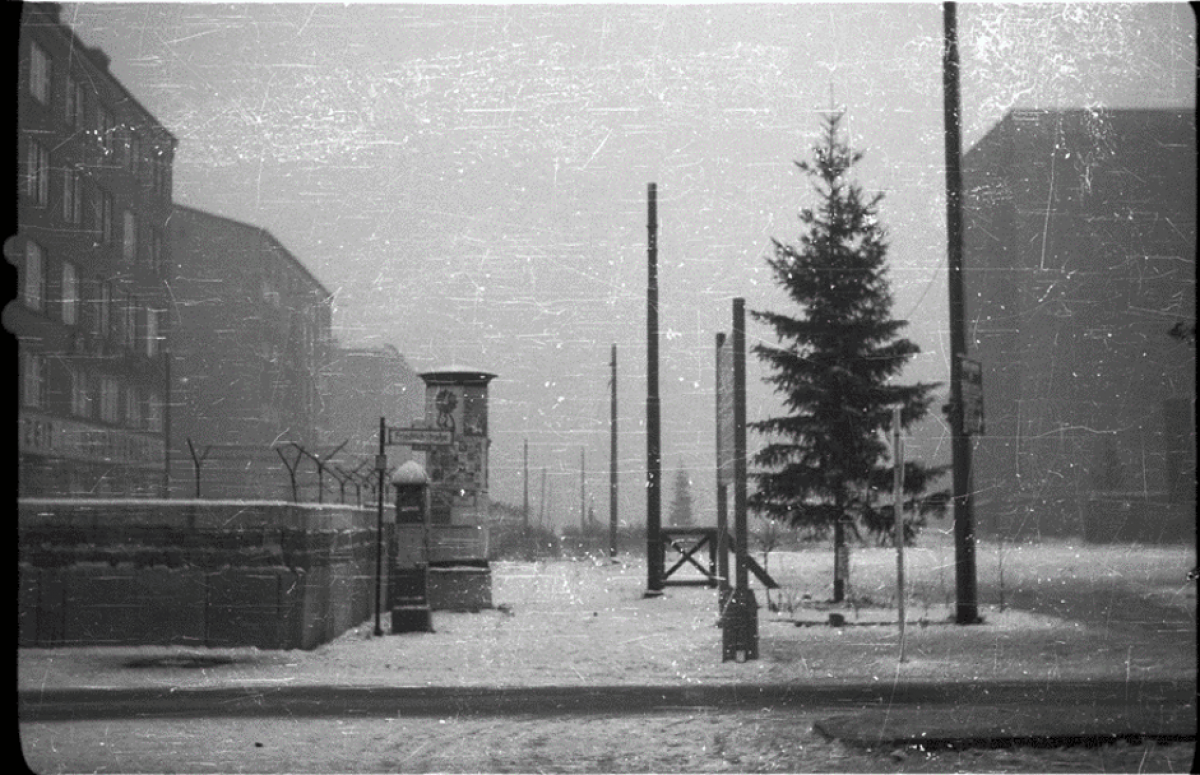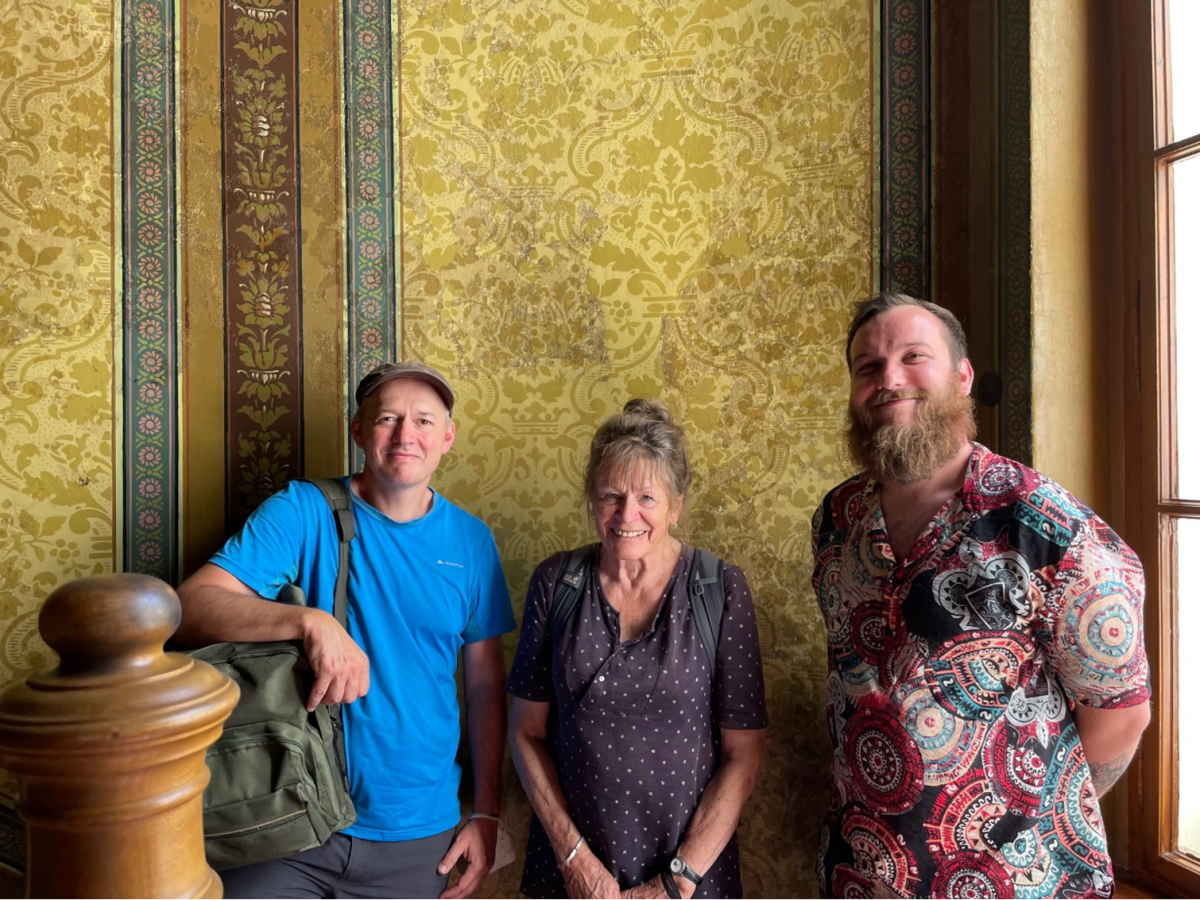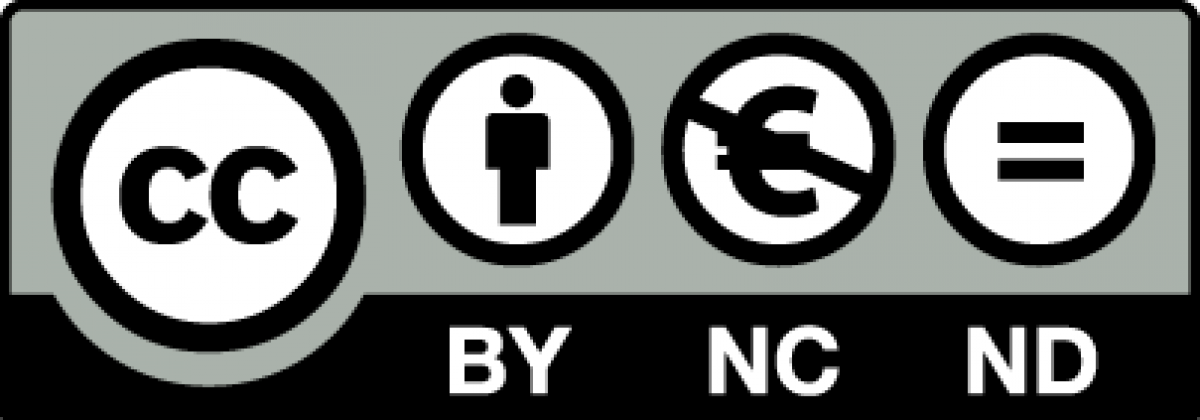The First Christmas at the Wall
Childhood Memories from the Divided Berlin
Today, Checkpoint Charlie is a sought-after destination for millions of tourists every year. It used to be the centre of Monika Scheffe's life. At the end of the war, she fled with her parents from Karlsbad to Berlin as a small child. She grew up in the direct vicinity of Checkpoint Charlie in West Berlin.By Patrick Weever and Felix Lodermeier
Snow-covered Friedrichstraße at the corner of Zimmerstraße with Christmas tree, December 1961 (Photo: Monika Scheffe)
The left side of the picture shows the first row of houses in East Berlin, whose windows were first barred and later bricked up after the Berlin Wall was removed to prevent escape attempts. On the facade is the name of the Eastern Christian Democratic Union newspaper Neue Zeit, a press organ of the GDR. In the centre of the photo is an advertising pillar with advertisements for Western products located next to the facade of the western side of the Wall. Next to the sector sign, which was ubiquitous in the Berlin border area at the time, a high stand is visible on which Westerners could look across the early version of the Berlin Wall into the eastern part of the city. To the right of the picture are two Christmas trees, erected on the initiative of the West Berlin Senate. The actual checkpoint is a few meters to the right outside of the frame. The photo was taken in December 1961 by Monika Scheffe's mother in front of her apartment building, Friedrichstraße 206, at sidewalk level, looking east toward Zimmerstraße.
Monika Scheffe went to a makeshift primary school in Wilhelmstraße because the old school building was a bombed ruin. There were 50 children from East and West Berlin in her class before the Wall was built. She experienced her childhood in an undivided neighbourhood in the wastelands of bombed-out Berlin, which resembled a playground for her. At first, Scheffe hardly felt any differences between East and West in her neighbourhood. For her, the system differences became clear only after the Wall was erected. Suddenly she was separated from her East German acquaintances and lost contact. One of her former East school friends managed to escape to the West shortly after the borders were closed. He had lived in the first house on the left side of the picture.
Scheffe experienced the events surrounding the tank standoff at Checkpoint Charlie on 27 October 1961 firsthand from her parents' living room. Looking back, the events of 1961 were, for her, an expression of the power politics of their time, in which two systems engaged in a decades-long struggle for supremacy. Even then, this was met with incomprehension from the local people. From the beginning, Scheffe could not imagine the Wall would last long. This turned out to be an illusion after the first victims of the Wall were claimed. The photo looks east to Zimmerstrasse, where a few months later, Peter Fechter was shot by GDR border guards and bled to death trying to escape to the West. She has fond memories, however, of the efforts of the Allied soldiers at the checkpoint. They not only decorated the checkpoint house with small Christmas trees but also helped out in the neighbourhood community with small favours and bartering. In this way, they tried to improve their everyday lives and those of the residents.

(From left) Patrick Weever, Monika Scheffe, and Felix Lodermeier in the stairwell of their former home at Friedrichstrasse 206, July 2022 (Photo: Hanno Hochmuth)
This text is published under the Creative Commons license "CC BY-NC-ND 4.0". You may share the text by mentioning the license CC BY-NC-ND 4.0 and the authors. Copyright information for the images can be found in the image captions.


